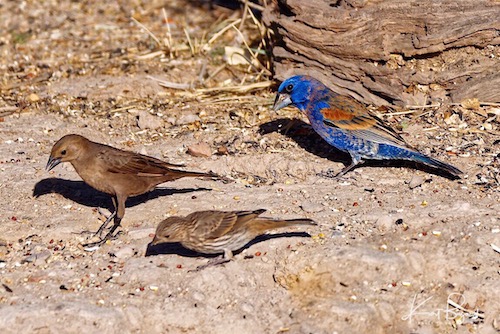
Some of you, long standing readers of the blog, since my trip to Africa may have noticed that I have been spending more time on animals than landscape or flowers. You would not be wrong to suggest that my recent focus is on nature photography rather than food and travel. Fear not, I will return to food and landscapes sooner rather than later. I have interesting information concerning cameras, lenses and techniques that have important consequences to your photographic purchases and workflow. In the meantime, I present a second visit to Sierra Vista Arizona, focusing on small birds. As I have said before, a location that excels in the breadth and depth of the birdwatching world.
Finches
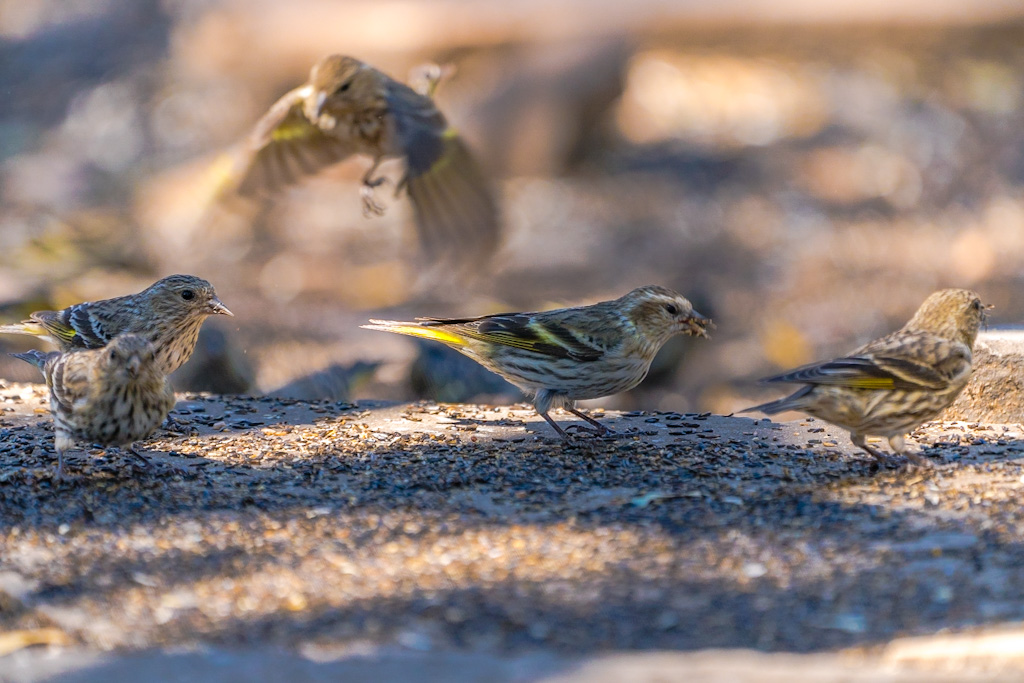
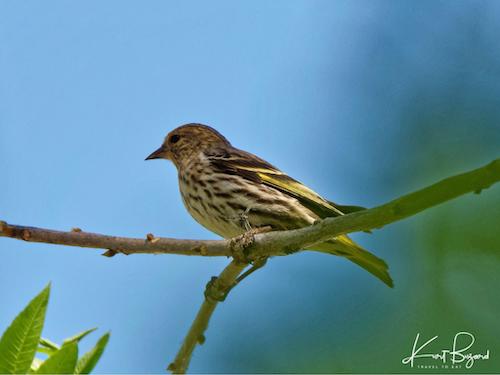
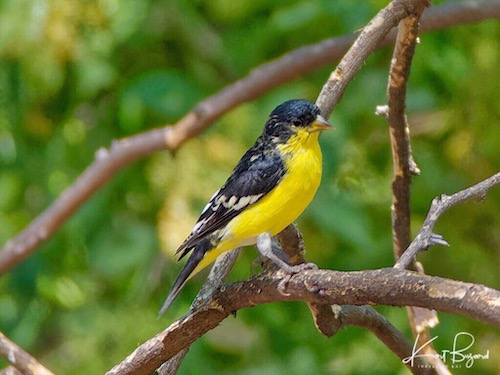
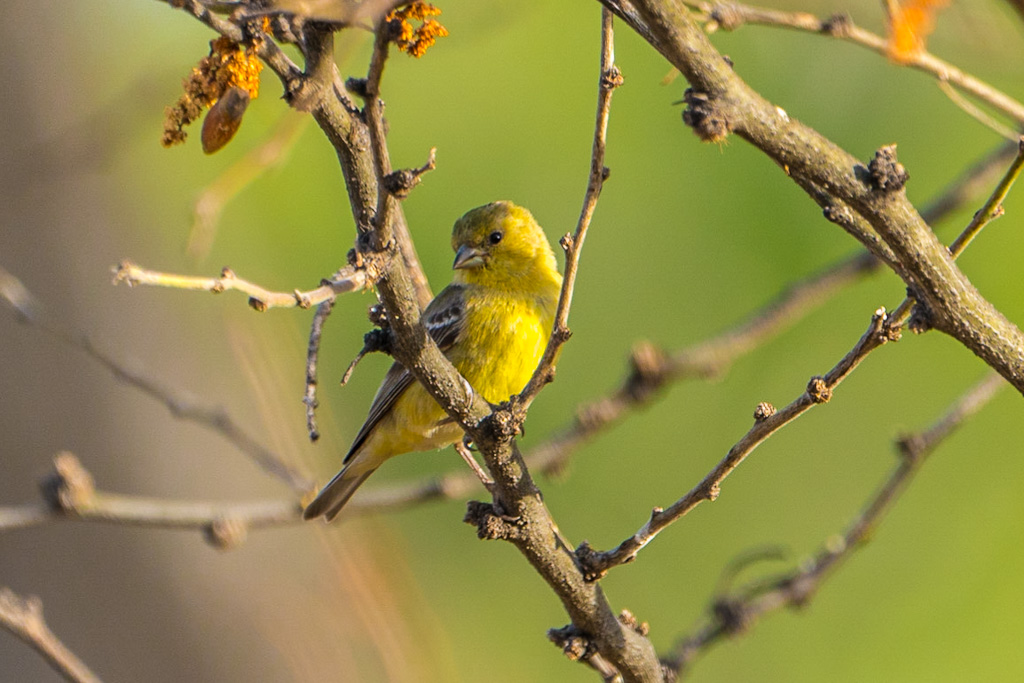
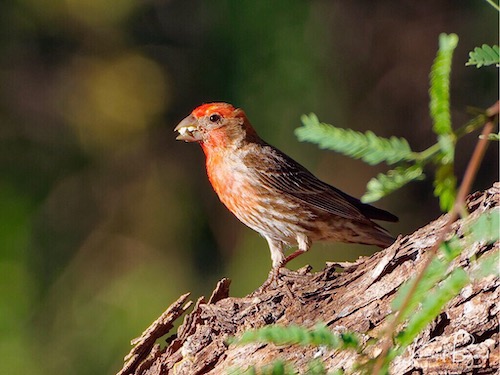
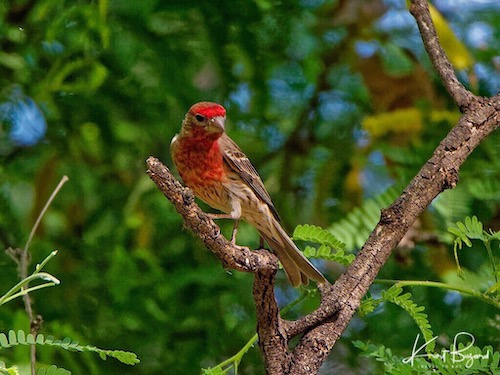
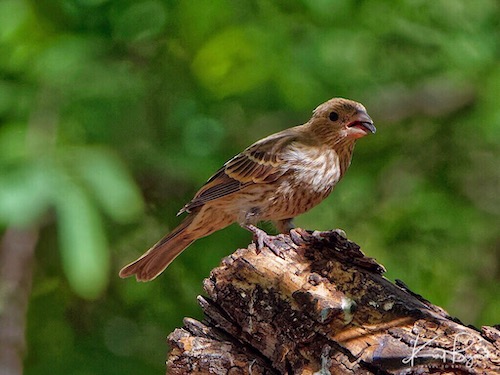
In my previous post on Sierra Vista in Arizona I covered the finches fairly well. Many of them did not migrate and were still present a month later in May as seen above. To be honest, I went back to Sierra Vista to take more pictures of birds and could not bear to not include all that I found.
House Wren
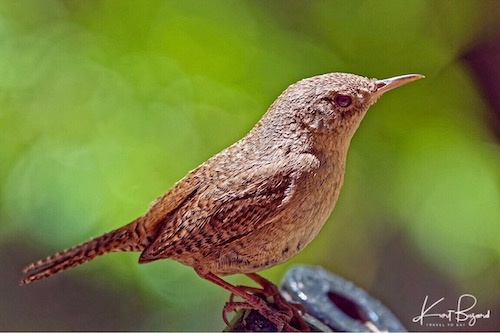
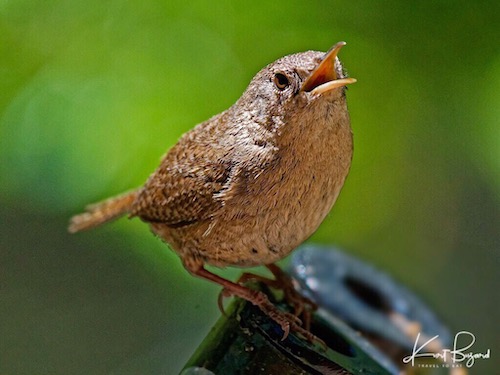
The House Wren (Troglodytes aedon) is a very small songbird of the wren family, Troglodytidae. It occurs from Canada to southernmost South America, and is thus the most widely distributed bird in the Americas. It occurs in most suburban areas in its range and it is the single most common wren. Adults are 4.3 to 5.1 in (11 to 13 cm) long, with a 5.9 in (15 cm) wingspan and weigh about 0.35 to 0.42 oz (10 to 12 gm). I personally love these little guys, they are tiny, cheerful and never fail to get your attention with their constant rich bubbly song. The subspecies vary greatly, with upperparts ranging from dull greyish-brown to rich rufescent-brown, and the underparts ranging from brown, over buff and pale grey, to pure white. All subspecies have blackish barring to the wings and tail, and some also to the flanks.
Cowbirds as Brood Parasites
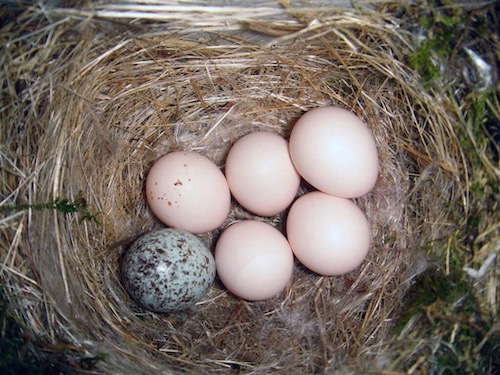
All Cowbirds are brood parasites that rely on others to raise their young. This unusual strategy appears among birds, insects and some fish. The brood parasite manipulates a host, either of the same or of another species, to raise its young as if it were its own, using brood mimicry, for example by having eggs that resemble the host’s (egg mimicry). Brood parasitism relieves the parasitic parents from the investment of rearing young or building nests for the young, enabling them to spend more time on other activities such as foraging and producing further offspring. Bird parasite species mitigate the risk of egg loss by distributing eggs amongst a number of different hosts. As this behaviour damages the host, it often results in an evolutionary arms race between parasite and host as the pair of species coevolve. Accepting a cowbird egg and rearing a cowbird chick can be costly to a host species. In the American redstart, nests parasitized by cowbirds were found to have a higher rate of predation. Host species sometimes notice the cowbird egg, with different hosts reacting to the egg in different ways. Some, like the blue-grey gnatcatcher, abandon their nest, losing their own eggs as well. Some, like the American yellow warbler, bury the foreign egg under nest material, where it perishes. And some, like the brown thrasher, physically eject the egg from the nest.
Bronzed Cowbird
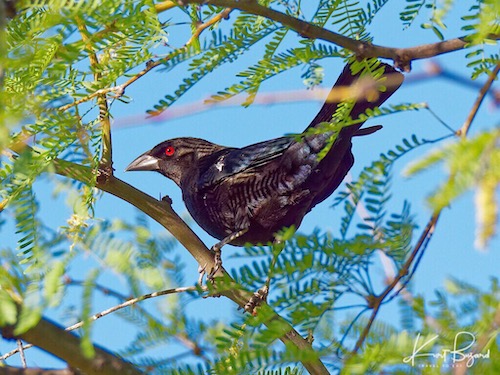
The bronzed cowbird (once known as the red-eyed cowbird), (Molothrus aeneus), breeds from the southern U.S. states of California, Arizona, New Mexico, Texas, and Louisiana south through Central America to Panama. They tend to be found in farmland, brush, and feedlots. Outside the breeding season, they are found in very open habitats, and roost in thick woods. The male bronzed cowbird is 7.9 in (20 cm) long and weighs 2.4 oz (68 gm), with green-bronze glossed black plumage. Their eyes are red in breeding season and brown otherwise. The female is 7.3 in (18.5 cm) long and weighs 2.0 oz (56 gm). She is a dull black with a brown underbelly, and has brown eyes. Like all cowbirds, this bird is an obligate brood parasite; it lays its eggs in the nests of other birds. The young cowbird is fed by the host parents at the expense of their own young. Hosts include Prevost’s ground-sparrow and White-naped brush finch. They develop rapidly, leaving the nest after 10–12 days.
Brown-Headed Cowbird
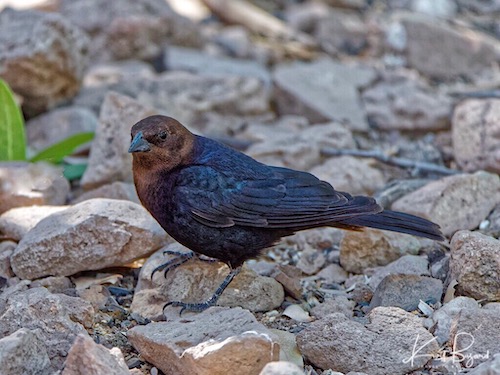
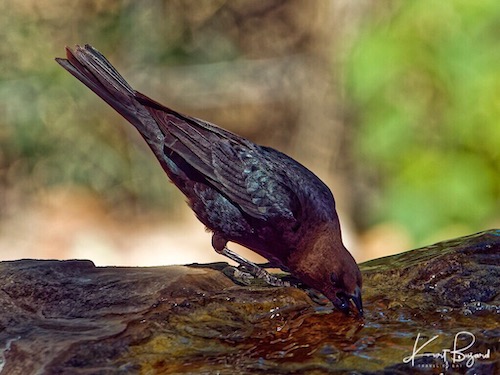
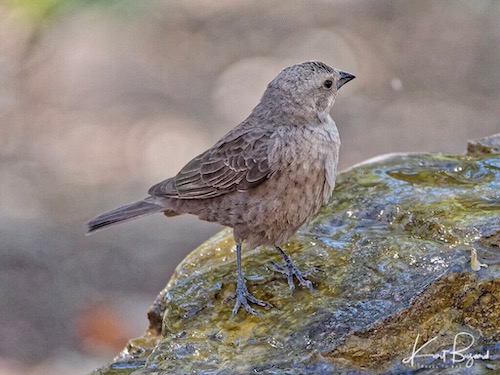
The brown-headed cowbird (Molothrus ater) is a bird of temperate to subtropical North America. They are permanent residents in the southern parts of their range; northern birds migrate to the southern United States and Mexico in winter, returning to their summer habitat around March or April. The adult male is iridescent black in color with a brown head. The adult female is slightly smaller and is dull grey with a pale throat and very fine streaking on the underparts. The total length is 6.3–8.7 in (16–22 cm) and the average wingspan is 14 in (36 cm). Body mass can range from 1.1–2.1 oz (30–60 gm), with females averaging 1.37 oz (38.8 gm) against the males average of 1.7 oz (49 gm). The brown-headed cowbird is an brood parasite: it lays its eggs in the nests of other small perching birds, particularly those that build cup-like nests. The brown-headed cowbird eggs have been documented in nests of at least 220 host species, including hummingbirds and raptors. Unlike the common cuckoo, the brown-headed cowbird eggs do not imitate those of a particular host. Some host species, such as the house finch, feed their young a vegetarian diet. This is unsuitable for young brown-headed cowbirds, meaning almost none survive to fledge.
Lark Sparrow
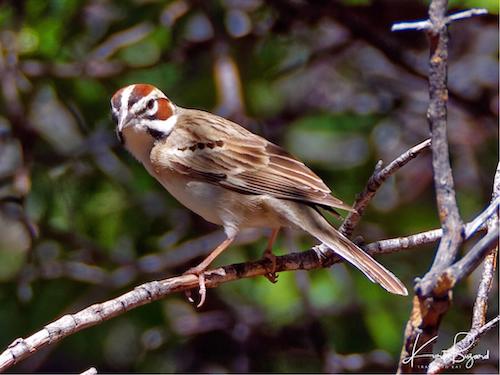
The Lark Sparrow (Chondestes grammacus) is a fairly large American sparrow. It breeds in southern Canada, much of the United States, and northern Mexico. It is much less common in the east, where its range is contracting. The populations in Mexico and adjacent states of the United States are resident, but other birds are migratory, wintering in the southern United States, Mexico and south to Guatemala. they have a length of 5.9–6.7 in (15–17 cm) and a weight of 0.8–1.2 oz (24–33 g). With unusual courtship displays as well as plumage, it is like no other sparrow and is the sole member of its genus. Unlike many songbirds, the Lark Sparrow walks on the ground rather than hops. It hops only during courtship.
Gray/Grey Catbird
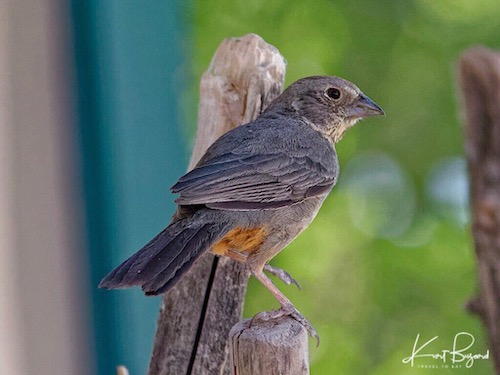
The Gray Catbird (Dumetella carolinensis), also spelled Grey Catbird, is a medium-sized North American and Central American perching bird native to most of temperate North America east of the Rocky Mountains, although gray catbirds migrate to the southeastern United States, Mexico, Central America, and the Caribbean in winter. Normally present on the breeding grounds by May, most leave for winter quarters in September/October. The gray catbird is a migratory species. Spring migration ranges from March to May, and in the fall ranges from late August to November. This species is named for its cat-like call. Like many members of the Mimidae (most famously mockingbirds), it also mimics the songs of other birds, as well as those of Hylidae (tree frogs), and even mechanical sounds. Because of its well-developed songbird syrinx, it is able to make two sounds at the same time. The alarm call resembles the quiet calls of a male mallard. Adults weigh from 0.82 to 1.99 oz (23.2 to 56.5 gm), with an average of 1.2–1.4 oz (35–40 gm). They range in length from 8.1 to 9.4 in (20.5 to 24 cm) and span 8.7 to 11.8 in (22 to 30 cm) across the wings.
Curve-Billed Thrasher
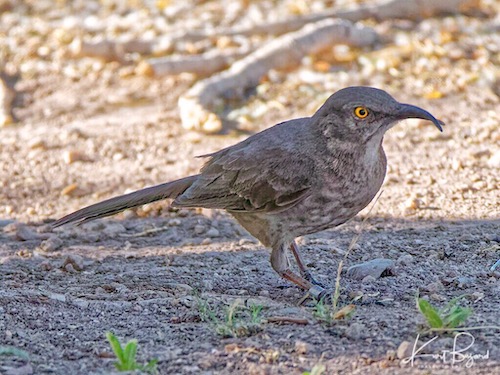
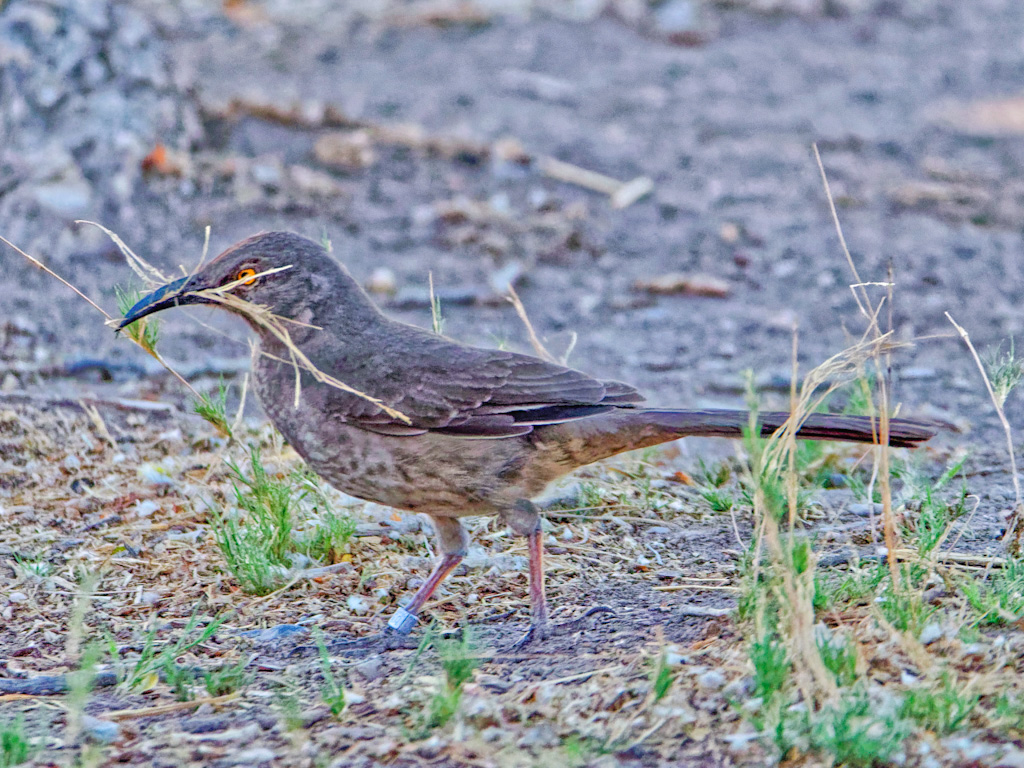
The Curve-Billed thrasher (Toxostoma curvirostre) that lives in the Sonoran Desert of Arizona and northwestern Mexico looks different than the form that lives in the Chihuahuan Desert of Texas and central Mexico, and they may be separate species. The Texas and eastern bird has a lighter breast, more contrasting spots, pale wingbars, and white tail corners. The more western form has a grayer breast with less obvious spots, inconspicuous wingbars, and smaller, more grayish tail corners. Referred to as the default desert bird, it is a non-migratory species. The curve-billed thrasher generally measures 10 to 11 in (25 to 28 cm) long, and is immediately recognized as a thrasher by its long tail and short wings. It is also recognized for its sickle-shaped bill, almost as long as its head width and brownish black in color. The body is compact with a large head, short wings and long tail. However, the tail is short relative to other thrasher species. The chest is grayish brown with circular brown-gray spots. The eyes are generally orange, shading to golden in adulthood.
Summer Tanager
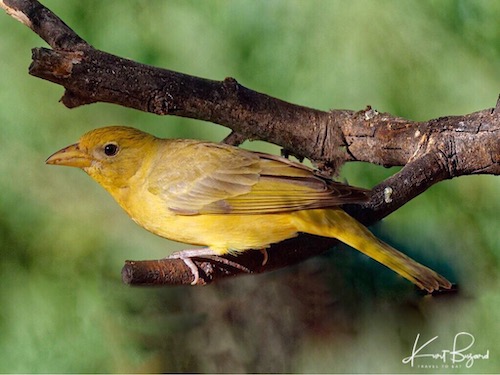
The Summer Tanager (Piranga rubra), is a medium-sized American songbird. Formerly placed in the tanager family (Thraupidae), it and other members of its genus are now classified in the cardinal family (Cardinalidae). The species’s plumage and vocalizations are similar to other members of the cardinal family. Their breeding habitat is open wooded areas, especially with oaks, across the southern United States, extending as far north as Iowa. These birds migrate to Mexico, Central America and northern South America. Adults have stout pointed bills and measure 6.7 in (17 cm) in length and 1.0 oz (29 gm) in weight. Adult males are rose red and similar in appearance to the hepatic tanager, although the latter has a dark bill; females are orangish on the underparts and olive on top, with olive-brown wings and tail. As with all other birds, all red and orange colorations are acquired through their diet.
Black-Headed Grosbeak
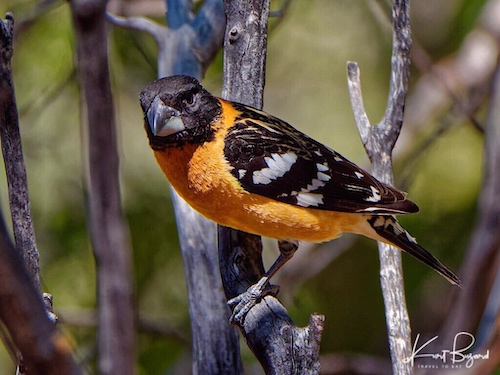
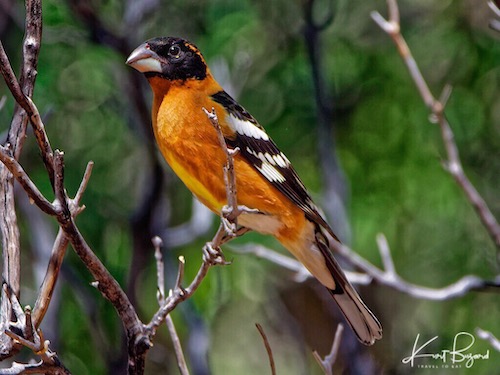
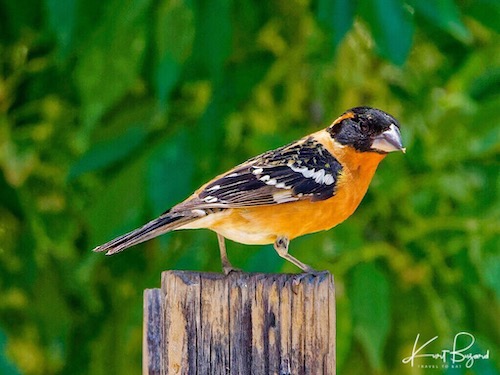
The black-headed grosbeak (Pheucticus melanocephalus) is a medium-sized, seed-eating bird in the same family as the northern cardinal, the Cardinalidae. The 7.5 in (19 cm) long, 1.7 oz (47 gm) black-headed grosbeak is a migratory bird, with nesting grounds from southwestern British Columbia, through the western half of the United States, into central Mexico. It occurs as an vagrant further south in Central America. Black-headed grosbeaks range from the Pacific Coast to the middle of the US Great Plains and from southwestern Canada to the mountains of Mexico. US and Canadian birds are highly migratory, wintering in Mexico. In the Great Plains, the range of the black-headed grosbeak and the rose-breasted grosbeak overlap and they have interbred somewhat. After the breeding season, they tend to seek out berry-rich areas. They migrate south early in the fall and return to the north late in the spring and have been known to do so in flocks. They also like to live in the desert in Arizona.
Blue Grosbeak
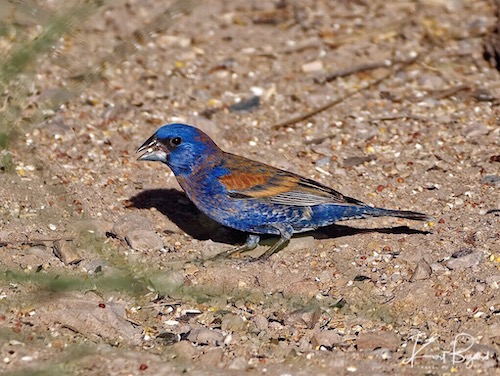
The blue grosbeak (Passerina caerulea) is a medium-sized seed-eating bird in the same family as the northern cardinal, “tropical” or New World buntings, and “cardinal-grosbeaks” or New World grosbeaks. The male blue grosbeak is almost entirely deep blue. The female is mostly brown. Both sexes are distinguished by their large, deep bill and double wing bars. These features, as well as the grosbeak’s relatively larger size, distinguish this species from the indigo bunting. Length can range from 5.5 to 7.5 in (14 to 19 cm) and wingspan is from 10 to 11 in (26 to 29 cm). Body mass is typically from 0.92 to 1.11 oz (26 to 31.5 g). This is a migratory bird, with nesting grounds across most of the southern half of the United States and much of northern Mexico, migrating south to Central America and in very small numbers to northern South America; the southernmost record comes from eastern Ecuador. It eats mostly insects, but it will also eat snails, spiders, seeds, grains, and wild fruits. The blue grosbeak forages on the ground and in shrubs and trees.
Rivoli’s Hummingbird
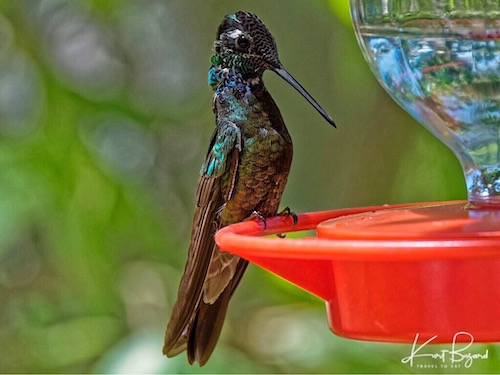
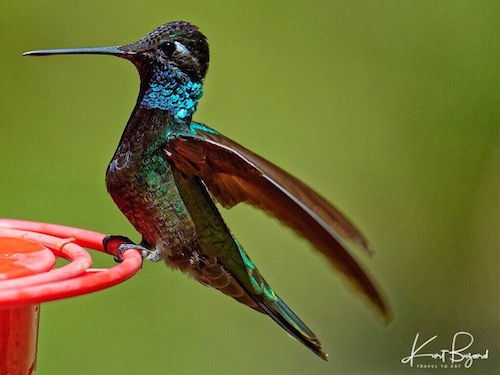
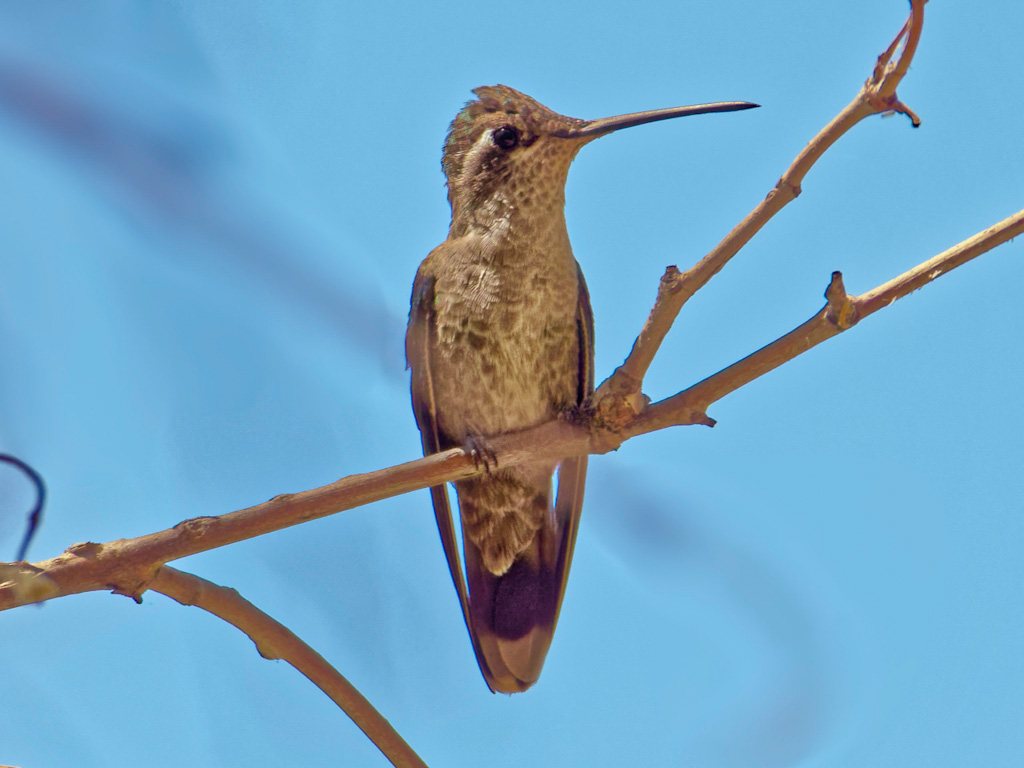
Rivoli’s hummingbird (Eugenes fulgens) is a large hummingbird. It was usually considered the only member of the genus Eugenes, and is also called the magnificent hummingbird. Rivoli’s hummingbird breeds in mountains from the southwestern United States to Honduras and Nicaragua. It inhabits the edges and clearings of montane oak forests from about 2000 m altitude up to the timberline. During the breeding season they live around ravines in mountain areas of southern Arizona and New Mexico. They feed in open meadows where flowers are abundant. Rivoli’s hummingbird species ranges from 4.3–5.5 in (11–14 cm) in length and weighs from 0.21 to 0.35 oz (6 to 10 gm), with males typically a little larger than females. Of the hummingbirds found in the United States, Rivoli’s hummingbird is one of the two largest species, rivaled in size only by the blue-throated hummingbird. The black bill is long and straight to slightly curved. Both sexes look very dark unless the sun catches the iridescence of the plumage and the brilliant colours flash in the sunlight. The adult male is green-bronze dorsally, becoming more bronzed on the black-tipped tail. The crown is violet, the throat gorget bright blue-green, and the rest of the head black apart from a white spot behind the eye. The chest is green-bronze and the belly grayish. The female is bronze-green dorsally and has a dull grey ventral colouring. There is a white stripe behind her eye. Immature birds are like the female, but darker and browner.
Black-Chinned Hummingbird
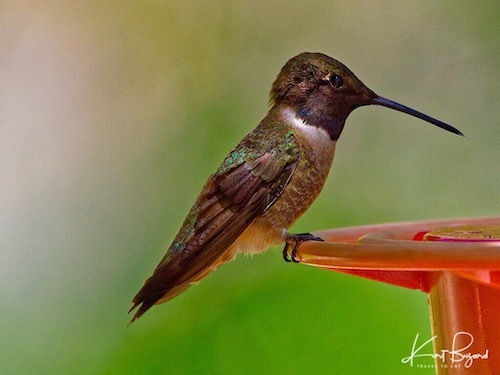
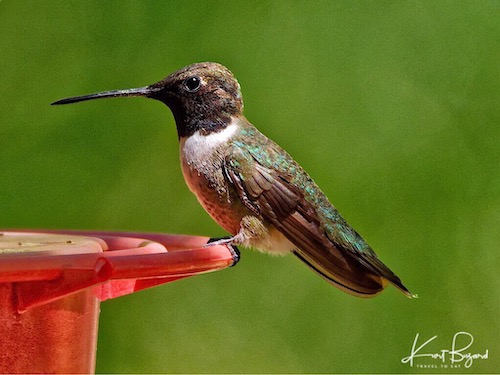
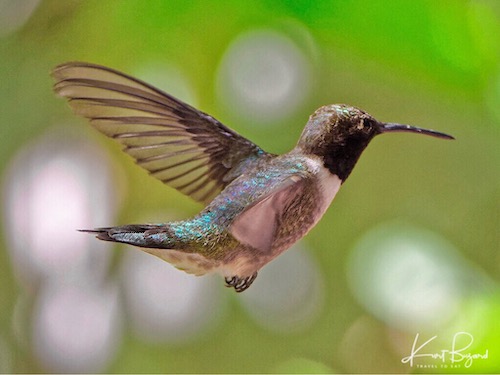
The Black-Chinned hummingbird (Archilochus alexandri) is a small hummingbird. It is an extremely adaptable bird, occupying a broad range of habitats. They are migratory and spend most of the winter in Mexico. The black-chinned hummingbird is 3.25 in (8.25 cm) long. Adults are metallic green above and white below with green flanks. Their bill is long, straight and very slender. The adult male has a black face and chin, a glossy purple throat band and a dark forked tail. The female has a dark rounded tail with white tips and no throat patch, they are similar to female ruby-throated hummingbirds. Juvenile plumage is similar to that of adult females, but with buff margins on the dorsal feathers. Juvenile males may also possess purple feathers on their throats.
Broad-Billed Hummingbird
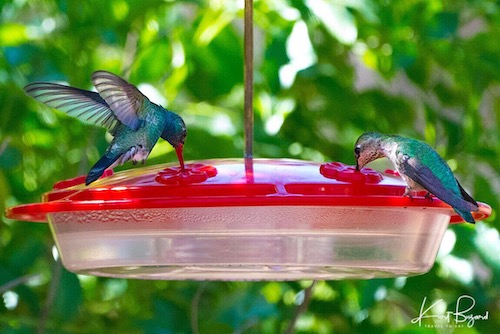
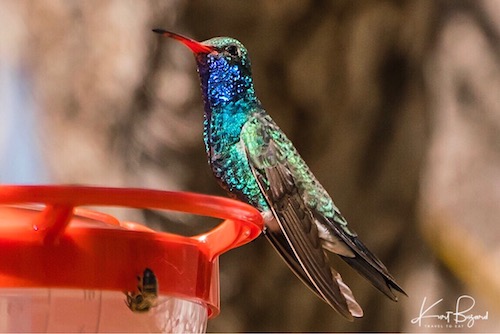
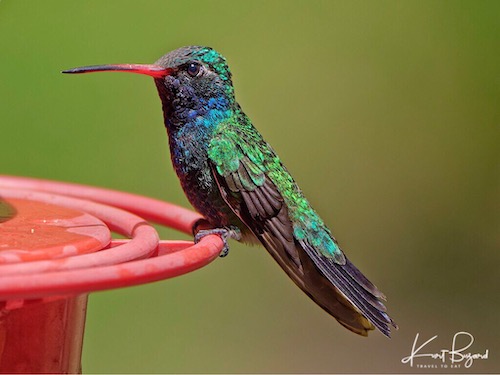
The Broad-Billed Hummingbird (Cynanthus latirostris) is a medium-sized hummingbird of North America. It is 9–10 cm long, and weighs approximately three to four grams. The breeding habitat is in arid scrub of the Sonoran Desert/Chihuahuan Desert ecotone and the Madrean Sky Islands in southeastern Arizona and extreme southwestern New Mexico of the Southwestern United States and northern Sonora of Northwestern Mexico. Outside its breeding range, it will occasionally stray, from southernmost California to Texas, Georgia, and Louisiana. Adults are colored predominantly a metallic green on their upperparts and breast. The undertail coverts are predominantly white. The tail is darkly colored and slightly forked. The bill of the male is straight and very slender. It is red in colouration, and shows a black tip. His throat is a deep blue. The female is less colorful than the male. She usually shows a white eye stripe.
Violet-Crowned Hummingbird
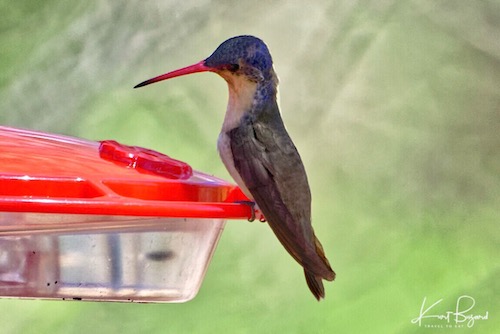
The violet-crowned hummingbird (Amazilia violiceps) is a medium-sized hummingbird. The bird is best distinguished by its violet-colored cap, from where it gets its name. It is 3.9 in (10 cm) long and weighs approximately 0.17 oz (5 gm). Adults are colored predominantly a dark olive green for their upperparts and tail. The underparts are predominantly white. The bill of the male is straight and very slender. It is red in coloration, and shows a black tip. The female is less colorful than the male. The breeding habitat is in arid scrub of southeastern Arizona in the United States to southwestern Mexico, (the Madrean Sky Islands), and it is typically a mountain species. Outside its breeding range, it will occasionally stray from southernmost California to southwest Texas.
Anna’s Hummingbird
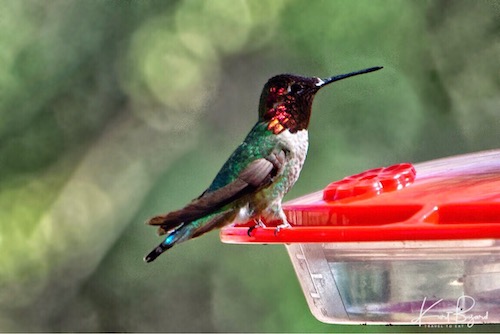
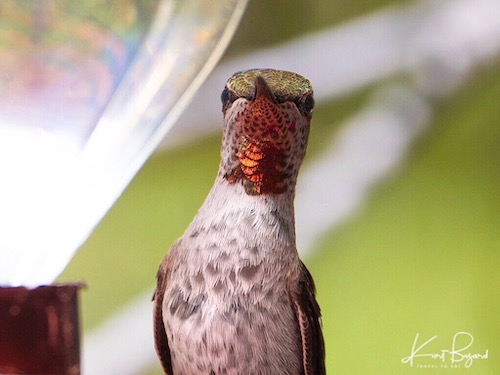
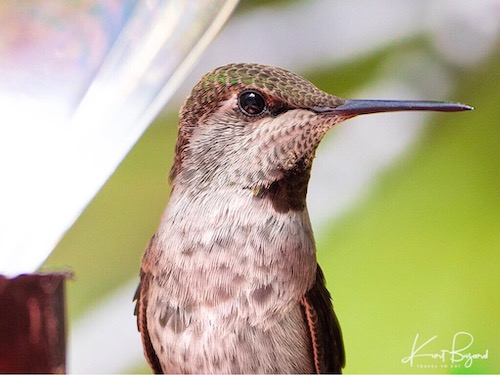
Anna’s hummingbird (Calypte anna), a medium-sized hummingbird native to the west coast of North America, was named after Anna Masséna, Duchess of Rivoli. In the early 20th century, Anna’s hummingbirds bred only in northern Baja California and southern California. The transplanting of exotic ornamental plants in residential areas throughout the Pacific coast and inland deserts provided expanded nectar and nesting sites, allowing the species to expand its breeding range. Anna’s hummingbird is 3.9 to 4.3 in (9.9 to 10.9 cm) long. It has an iridescent bronze-green back, a pale grey chest and belly, and green flanks. Its bill is long, straight, and slender. The adult male has an iridescent crimson-red derived from magenta to a reddish-pink crown and gorget, which can look dull brown or gray without direct sunlight and a dark, slightly forked tail. Females also have iridescent red gorgets, though they are usually smaller and less brilliant than the males, located primarily on the throat. unless the light catches it, you can miss the throat gorgets. Anna’s is the only North American hummingbird species with a red crown. Females and juvenile males have a dull green crown, a grey throat with or without some red iridescence, a grey chest and belly, and a dark, rounded tail with white tips on the outer feathers.
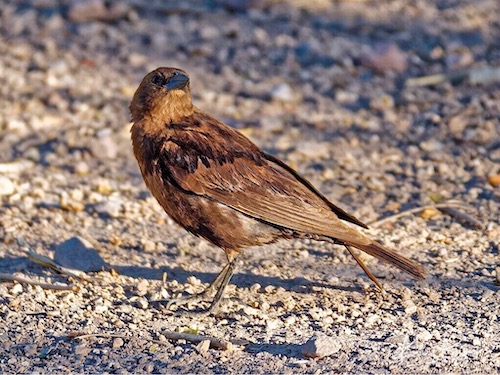
I hope you enjoyed the post, please leave a comment.
[mappress mapid=”235″]

